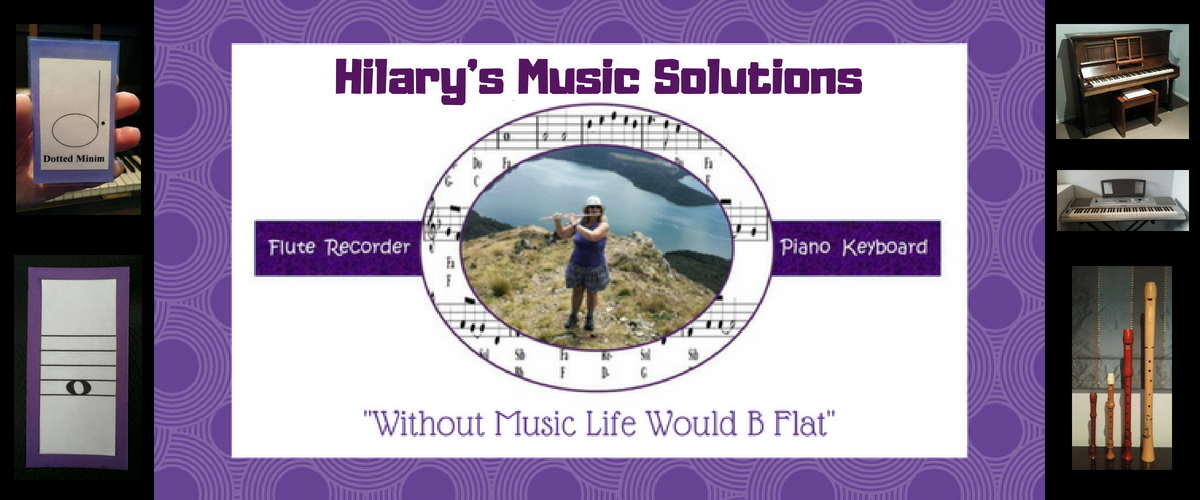You are 7 and your class is having a soiree at the end of term where everyone is expected
to do an ‘item’ whether it be individually or in small groups. It can be anything like
reading a poem, telling a story, performing a musical instrument, talking about your
craft and so on. You have been learning the flute and have decided to learn and play
Twinkle Twinkle Little Star as your performance.
to do an ‘item’ whether it be individually or in small groups. It can be anything like
reading a poem, telling a story, performing a musical instrument, talking about your
craft and so on. You have been learning the flute and have decided to learn and play
Twinkle Twinkle Little Star as your performance.
So how do you learn and play this?
You need to:
1. Know Your Instrument:
This involves:
~ putting the flute together
~ making a sound on the flute
I gather if you want to play Twinkle Twinkle Little Star then you can already make some
sounds
sounds
~ knowing the fingering to the notes required in the piece
~ caring for your instrument so it is in top form for your performance
2. Know everything that is required to read the sheet music:
This would be:
~ the range of note names
this piece uses the notes F G A B flat C and D second octave.
~ the range of note lengths
this piece uses 1 and 2 count notes
~ time signatures:
a time signature is the 2 numbers at the start of each piece telling you how many counts there
are in the bar and what type of note gets the count.
are in the bar and what type of note gets the count.
this piece has a time signature of 4
4
- meaning 4 crotchet beats in the bar.
~ how to count correctly to keep in good timing with a steady beat:
So in this piece you would count 1 2 3 4 l 1 2 3 4 I 1 2 3 4 l etc
~ dynamic signs:
these are the signs to tell you how soft and loud the notes are to be played
You start off learning
p: piano: soft
mp: mezzo piano: moderately soft
mf: mezzo forte: moderately loud
f: forte: loud
This piece is to be played mf ie moderately loud
At this stage of learning you will aware of what a stave, treble clef, bars and barlines are.
Just in case you have forgotten then they are:
Stave: the 5 horizontal lines the music is written on
Treble Clef: This is the sign at the very start of every line of music.
Flute music is written using the treble clef.
Barlines: The vertical lines seen at regular interval throughout the music
Double Barline: This is seen at the end of every piece of music.
Bars: The music ( notes and rests) seen between 2 barlines.

3. Learn The Piece:
When you learn any piece of music you
~ play the notes accurately with correct fingering
~ get the correct timing and feel of the beat
~ add the extras like dynamics
4. Practise:
In order to get the piece up to performance standard then you need to practice.
This involves lots of repeated playing on different days of the week.
Any difficult parts, if you have them, need to be pulled out separately and repeated to
make as easy as the other parts.
make as easy as the other parts.
For example in Twinkle Twinkle Little Star, you may find going from C to D second
octave to C difficult. Just pull those 3 notes out, C D C and repeat 3 times daily. You can
of course play it more times as necessary.
octave to C difficult. Just pull those 3 notes out, C D C and repeat 3 times daily. You can
of course play it more times as necessary.
Look Here for more details on practising techniques.
5. Performance:
It is the end of term and Soiree Time Classroom Style.
Are you prepared?
Have you done enough practise?
Is your flute in good condition?
Take a look at How To Make The Most Out Of Your Musical Performance
Good Luck
Enjoy your Success
And Everyone Else’s
It Is Time To Celebrate
This is an outline you can apply to learning any piece of music.

No comments:
Post a Comment